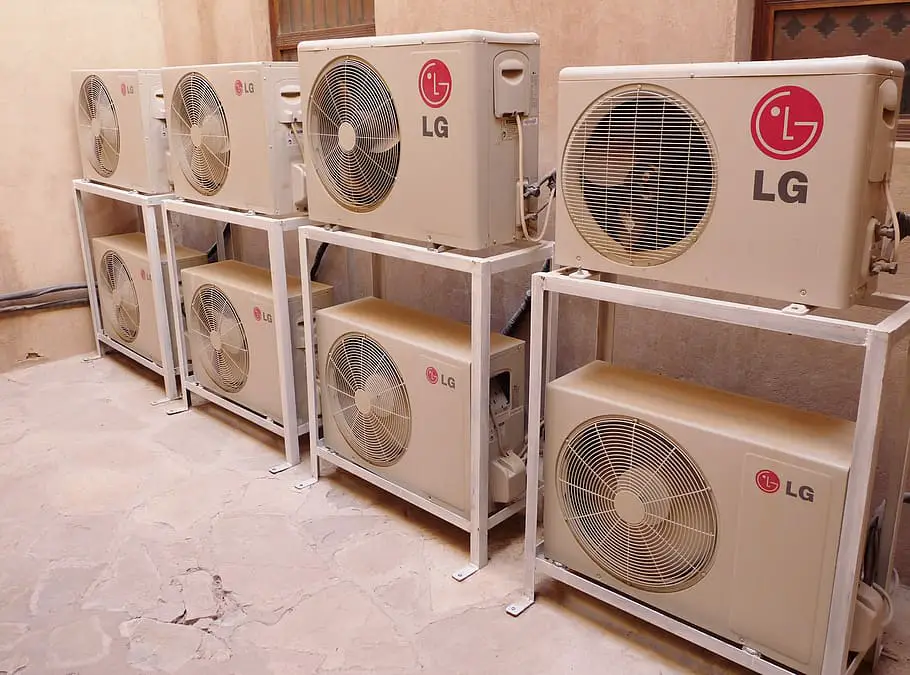
Discover how to measure air pollution at home. Improve your indoor air quality and breathe easier with our practical guide. Start today!
Ever wondered about the quality of the air you breathe in your own home?
It’s a question that’s more important than you might think. In this guide, we’ll delve into the ins and outs of how to measure air pollution at home.
We’ll explore why it’s important, how it’s done, and what you can do to ensure the air in your home is as clean and healthy as possible.
So, let’s take a deep breath and dive right in!
How To Measure Air Pollution At Home
Welcome to our comprehensive guide on how to measure air pollution at home.
As we spend a significant amount of our time indoors, it’s crucial to understand the quality of the air we’re breathing.
This guide will walk you through the basics of air pollution, its impact on our health, and why it’s essential to monitor it at home.
We’ll also cover various methods to measure air pollution, from using air quality monitors to other practical techniques.
Plus, we’ll share some handy tips on improving your indoor air quality.
So, whether you’re a seasoned homeowner or just starting your journey, this guide has something for everyone. Let’s get started!
Importance of Measuring Air Pollution at Home
You might be surprised to learn that the air inside our homes can sometimes be more polluted than the air outside.
From dust and pet dander to mold spores and chemical fumes, our homes can harbor a variety of pollutants that can affect our health and well-being.
That’s why measuring air pollution at home is so important. It’s not just about keeping our living spaces clean and comfortable.
It’s about safeguarding our health and the health of our loved ones. By understanding and monitoring the quality of our indoor air, we can take steps to improve it and, in turn, enhance our overall quality of life.
Brief Overview of the Article
In this article, we’re going to take a deep dive into the world of indoor air pollution.
We’ll start by exploring what air pollution is and the different types of pollutants that can be found in our homes.
We’ll then discuss the health risks associated with poor indoor air quality and why it’s so crucial to keep an eye on it.
From there, we’ll guide you through the process of measuring air pollution at home, discussing the use of air quality monitors and other methods.
We’ll also provide tips on how to improve your indoor air quality. Finally, we’ll wrap up with a handy FAQ section to answer some common questions on the topic.
So, sit back, relax, and let’s embark on this journey to cleaner healthier air together!
Understanding Air Pollution
Before we dive into the specifics of measuring air pollution at home, let’s take a moment to understand what we’re dealing with.
Air pollution isn’t just an outdoor problem; it’s an indoor issue too.
From the dust that settles on your bookshelves to the invisible gases that can seep from your appliances, understanding air pollution is the first step towards creating a healthier home environment.
So, let’s unravel the mystery of air pollution together and learn more about its types and the health effects it can have.
Ready? Let’s get started!
Definition of Air Pollution
When we think of air pollution, images of smog-filled cities and industrial smokestacks often come to mind.
But air pollution is much more than that. Simply put, air pollution refers to the presence of substances in the air that can harm human health or the environment.
These substances, or pollutants, can be natural, like dust or pollen, or man-made, like chemical fumes or smoke.
When these pollutants accumulate in high enough concentrations, they can create an unhealthy environment, even within the confines of our homes.
Types of Indoor Air Pollutants
Now, let’s talk about the types of pollutants that can be found in our homes.
One of the most common is dust, which can contain a mix of soil particles, skin cells, and fibers from clothing and furniture.
Then there’s mold and mildew, which can grow in damp areas and release spores into the air.
We also have to consider volatile organic compounds (VOCs), which are gases emitted by certain solids or liquids, including paints, cleaning supplies, and even some types of furniture.
Other indoor air pollutants include pet dander, pollen, tobacco smoke, and gases like radon and carbon monoxide.
It’s a long list, but being aware of these pollutants is the first step towards managing them.
Health Effects of Air Pollution
The health effects of air pollution can range from minor irritations to serious health conditions.
Short-term exposure can lead to eye, nose, and throat irritation, headaches, dizziness, and fatigue.
Long-term or high-level exposure, on the other hand, can lead to respiratory diseases, heart disease, and even cancer.
Certain groups, like children, the elderly, and those with pre-existing health conditions, are particularly vulnerable.
But remember, understanding these risks is not meant to scare you. Instead, it’s about empowering you with the knowledge you need to create a healthier living environment.
After all, the air we breathe plays a crucial role in our overall health and well-being.
Why Measure Air Pollution at Home
Now that we’ve got a handle on what air pollution is and the types of pollutants we might find in our homes, let’s delve into why it’s so important to measure air pollution at home.
You might be thinking, I keep my home clean, so why should I worry about air pollution?
Well, the truth is, indoor air pollution can exist in any home, regardless of how spotless it is.
And since we spend a significant portion of our time indoors, the quality of our indoor air can have a big impact on our health and well-being.
So, let’s explore why measuring air pollution at home is not just important, but essential for maintaining a healthy living environment. Ready to learn more? Let’s go!
Importance of Indoor Air Quality
Indoor air quality is a key factor in our health and comfort at home. Good air quality means the air is clean, fresh, and free of pollutants.
This is important because we spend a lot of our time indoors working, sleeping, cooking, and relaxing.
During all these activities, we’re breathing in the air around us. If that air is polluted, we’re constantly exposing our bodies to potential harm.
On the other hand, when our indoor air quality is good, we can breathe easy knowing we’re doing our part to maintain our health and the health of those we live with.
Impact on Overall Well-being
Beyond the physical health risks, poor indoor air quality can also impact our overall well-being.
Think about it. If you’re constantly dealing with headaches, fatigue, or allergies, it’s going to affect your mood and energy levels.
You might have trouble focusing, feel more stressed, or struggle with sleep.
On the other hand, improving your indoor air quality can enhance your comfort, productivity, and overall sense of well-being.
It’s not just about preventing illness. It’s about creating a home environment where you can thrive.
How to Measure Air Pollution at Home
Now that we understand the importance of indoor air quality, let’s get down to the nitty-gritty: how to measure air pollution at home.
It might sound like a daunting task but don’t worry, it’s simpler than you might think.
With the right tools and a little know-how, you can become your own indoor air quality expert.
In this section, we’ll guide you through the process of using air quality monitors, interpreting the results, and even exploring other methods to check your air quality.
So, if you’re ready to take control of your indoor environment and breathe easier, let’s dive in!
Use of Air Quality Monitors
Air quality monitors are one of the most effective tools for measuring air pollution at home.
These handy devices work by sampling the air in your home and analyzing it for various pollutants.
They can provide real-time data about the quality of your indoor air, allowing you to identify any issues and take action to improve your air quality.
Think of them as your personal indoor air detectives, constantly on the lookout for potential problems.
Types of Air Quality Monitors
There are several types of air quality monitors available, each designed to detect specific pollutants.
Some monitors focus on particulate matter, tiny particles suspended in the air that can be inhaled into our lungs.
Others are designed to detect gases like carbon monoxide or radon.
There are also multi-purpose monitors that can detect a range of pollutants, from dust and pollen to VOCs and humidity levels.
The type of monitor you choose will depend on your specific concerns and the potential pollution sources in your home.
How to Use Air Quality Monitors
Using an air quality monitor is generally straightforward. Most devices are plug-and-play, meaning you simply need to plug them in, turn them on, and they’ll start monitoring your air.
Some monitors can be linked to your smartphone or computer, providing you with real-time data and alerts about your indoor air quality.
Placement is also important. You’ll want to place your monitor in a central location, away from windows and vents, for the most accurate readings.
Interpreting the Results
Once your air quality monitor is up and running, it will provide you with data about the pollutants in your home.
But what do these numbers mean? While each monitor is different, most will provide you with an air quality index (AQI), a scale used to measure the level of pollution in the air.
The lower the AQI, the cleaner your air. If your AQI is high, it means there are significant levels of pollutants in your air, and you may need to take steps to improve your air quality.
Remember, understanding these results is key to taking control of your indoor air quality.
Other Methods to Check Air Quality
While air quality monitors are a fantastic tool for measuring air pollution at home, they’re not the only method available.
There are other practical ways to check your indoor air quality, some of which you can do right now with items you likely already have at home.
From visual inspections for mold and dust to using radon test kits and carbon monoxide detectors, these methods can provide valuable insights into the state of your indoor air.
So, let’s explore these alternative methods and learn how they can help us maintain a healthy indoor environment.
Ready to dive in? Let’s get started!
Visual Inspection for Mold and Dust
One of the simplest ways to check your indoor air quality is through a visual inspection for mold and dust.
Mold typically appears as a fuzzy or slimy patch that may be green, black, brown, or orange in color. It often grows in damp areas, like bathrooms, kitchens, and basements.
If you see mold, it’s a clear sign of a moisture problem and poor indoor air quality.
Dust, on the other hand, can accumulate on surfaces and in the air. While a little dust is normal, excessive dust can indicate poor air quality and can contribute to allergies and other health problems.
Use of Radon Test Kits
Radon is a radioactive gas that can seep into your home from the ground.
It’s colorless, odorless, and tasteless, making it impossible to detect without special equipment.
That’s where radon test kits come in. These kits allow you to collect air samples from your home that you send to a lab for analysis.
The lab will then provide you with a report detailing the levels of radon in your home.
If the levels are high, you’ll need to take steps to reduce them.
Carbon Monoxide Detectors
Carbon monoxide is another colorless, odorless gas that can be deadly in high concentrations.
It’s produced by burning fuels, so any home with a gas stove, furnace, or fireplace should have a carbon monoxide detector.
These devices work by sounding an alarm when they detect high levels of carbon monoxide in the air.
This gives you time to ventilate your home or evacuate if necessary.
Remember, carbon monoxide detectors are not a luxury, they’re a necessity for maintaining a safe and healthy home.
How to Improve Indoor Air Quality
Knowing how to measure air pollution at home is only half the battle.
The next step, and arguably the most important, is improving your indoor air quality.
But don’t worry, improving your indoor air quality doesn’t have to be a daunting task.
From regular cleaning and maintenance to proper ventilation and the use of air purifiers, there are several simple and effective ways to clean up your indoor air.
In this section, we’ll guide you through these methods and provide practical tips to help you create a healthier, more comfortable living environment.
So, are you ready to breathe easier? Let’s get started
Regular Cleaning and Maintenance
One of the simplest ways to improve your indoor air quality is through regular cleaning and maintenance.
This includes dusting and vacuuming regularly to reduce dust and allergens, cleaning or replacing air filters in your HVAC system to ensure they’re effectively trapping pollutants, and addressing any moisture problems to prevent mold growth.
Regular cleaning not only helps to improve your air quality but also makes your home more comfortable and inviting.
Proper Ventilation
Proper ventilation is crucial for maintaining good indoor air quality. It helps to remove stale indoor air and replace it with fresh outdoor air.
You can improve ventilation by opening windows and doors when the weather allows, using fans to circulate air, and using vented exhaust fans in your kitchen and bathroom to remove cooking fumes, odors, and humidity.
If you live in an area with poor outdoor air quality or if it’s too cold or hot to open windows, consider using a mechanical ventilation system, such as a heat recovery ventilator.
Use of Air Purifiers
Air purifiers can also be a valuable tool for improving indoor air quality.
These devices work by drawing in air and passing it through a series of filters to remove pollutants.
They can be particularly helpful for people with allergies or asthma, as they can remove allergens like pollen, pet dander, and dust mites from the air.
When choosing an air purifier, look for one that’s the right size for your space and that has a high-efficiency particulate air (HEPA) filter, which can capture 99.97% of particles that are 0.3 microns or larger.
Importance of Monitoring Humidity Levels
Finally, it’s important to monitor humidity levels in your home.
High humidity can create a breeding ground for mold and dust mites, while low humidity can cause dry skin and respiratory problems.
The ideal indoor humidity level is between 30% and 50%. You can measure humidity with a simple device called a hygrometer, and you can control it with a humidifier or dehumidifier.
By keeping your humidity levels in check, you can create a more comfortable and healthier indoor environment.
FAQs
We’ve covered a lot of ground in this guide, but you might still have some questions about measuring and improving air pollution at home.
That’s why we’ve included this FAQ section. Here, we’ll tackle some of the most common questions people have on this topic.
From understanding how to measure air pollutants to knowing if home air quality tests are worth it, we’ve got you covered.
So, let’s dive into these questions and clear up any lingering doubts you might have. Ready? Let’s get started!
Q: Is there a way to measure air pollution?
A: Absolutely! There are several ways to measure air pollution at home.
One of the most effective methods is using an air quality monitor. These devices can measure various pollutants in your air in real-time, providing valuable data about your indoor air quality.
Other methods include visual inspections for mold and dust, using radon test kits, and installing carbon monoxide detectors.
Q: What are the 3 ways used to measure air pollutants?
A: There are many ways to measure air pollutants, but three common methods include:
Air Quality Monitors: These devices can detect a range of pollutants, from dust and pollen to gases like carbon monoxide and radon.
Radon Test Kits: These kits allow you to collect air samples from your home that are then analyzed in a lab for radon levels.
Carbon Monoxide Detectors: These devices sound an alarm when they detect high levels of carbon monoxide, a dangerous gas that can be produced by burning fuels.
Q: Are home air quality tests worth it?
A: Yes, home air quality tests are definitely worth it.
They provide valuable insights into the quality of your indoor air, allowing you to identify any issues and take steps to improve your air quality.
This can help to protect your health and enhance your overall well-being.
Q: What are the symptoms of poor air quality in a house?
A: Symptoms of poor air quality in a house can vary, but they often include headaches, dizziness, fatigue, and irritation of the eyes, nose, and throat.
In some cases, poor indoor air quality can also exacerbate allergies and asthma.
If you or your family members are experiencing these symptoms and they seem to improve when you’re away from home, it could be a sign of poor indoor air quality.
Conclusion
We’ve journeyed through the ins and outs of measuring and improving air pollution at home, and now it’s time to wrap things up.
But remember, understanding and improving your indoor air quality is not a one-time task.
It’s an ongoing process of monitoring, adjusting, and learning. In this conclusion, we’ll recap the key points we’ve covered and remind you of the importance of maintaining good indoor air quality.
So, let’s take a moment to reflect on what we’ve learned and consider our next steps towards cleaner, healthier air at home.
Ready? Let’s wrap this up!
Recap of Key Points
We’ve covered a lot in this guide, so let’s take a moment to recap the key points.
We started by understanding what air pollution is and the types of pollutants that can be found in our homes.
We then discussed the health risks associated with poor indoor air quality and why it’s so crucial to monitor it.
We explored the use of air quality monitors and other methods to measure air pollution at home, and we provided practical tips on how to improve your indoor air quality.
Finally, we answered some common questions about measuring and improving air pollution at home.
Importance of Maintaining Good Indoor Air Quality
Maintaining good indoor air quality is not just about creating a comfortable living environment.
It’s about protecting our health and well-being. Poor indoor air quality can lead to a range of health problems, from minor irritations to serious conditions like respiratory diseases and heart disease.
By measuring and improving our indoor air quality, we can reduce these risks and create a healthier, happier home.
Remember, the air we breathe plays a crucial role in our overall health, so let’s make sure it’s as clean and healthy as possible.
Read this EPA guide an Introduction to Indoor Air Quality










